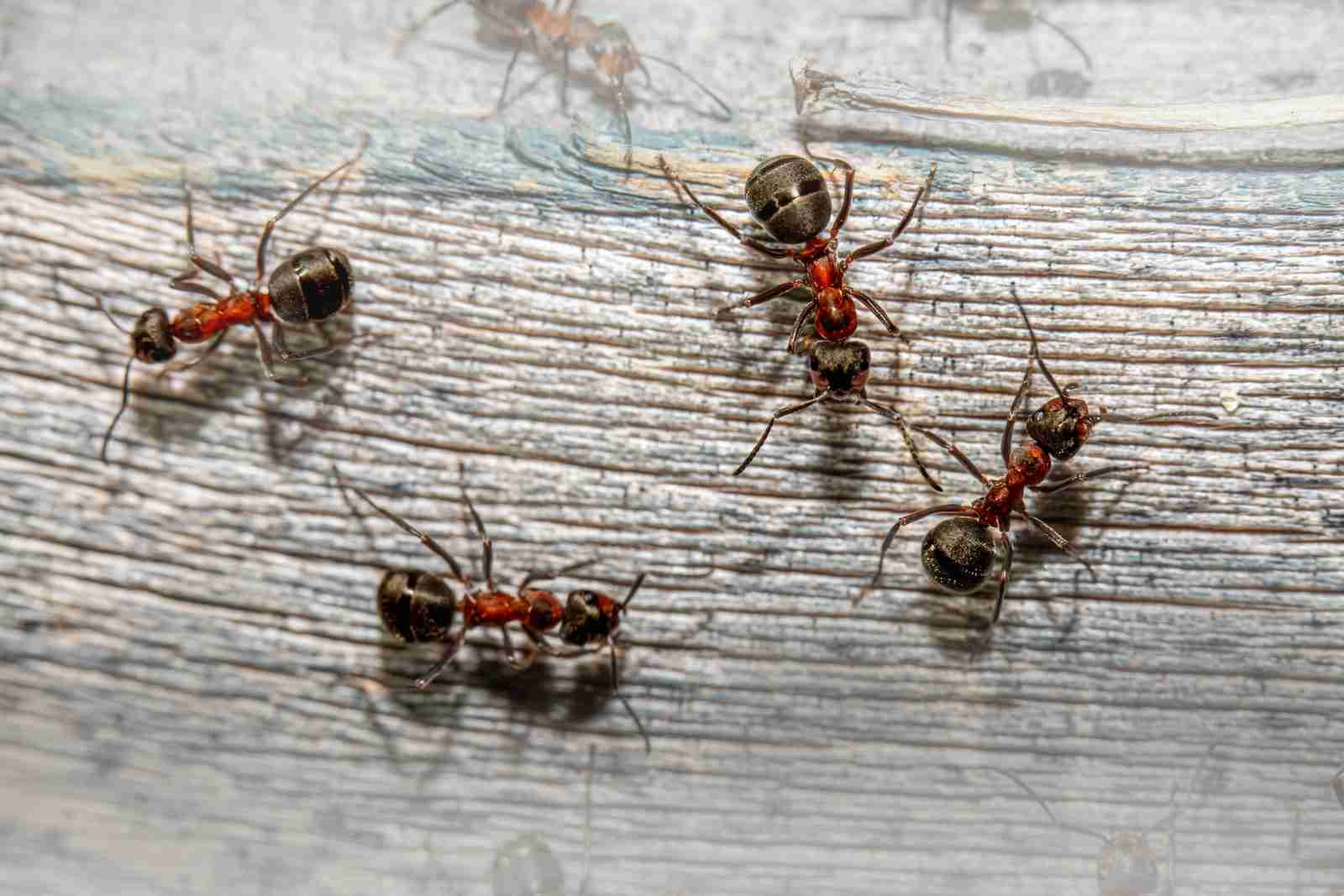23 Facts About Ants (Tiny Ants with Mighty Facts)
1. Ants have three distinct body parts: the head, thorax, and abdomen.
Ants belong to the Insecta class in the Animalia kingdom. They have three distinct body parts, notably the head, thorax, and abdomen.
The head houses antennas, eyes, and mandibles, while the thorax is home to six jointed legs as well as wings (if present). Completing the miraculous structure of an ant lies the abdomen, responsible for housing digestive organs, reproduction systems, and various other internal organs.
2. Ants are able to Lift up to 5,000 times their own Body Weight.
Ants are among the strongest creatures on earth due to their impressive strength compared to their small size. Remarkably, the little insect can lift up an extraordinary amount of weight, 5,000 times heavier than their own body weight.
3. The Queen Ant is usually much larger than other Ants.
The majestic Queen Ant graces our presence for extended periods of time. She typically appears larger than most ants due to her exceptional nature, and so, she lives longer as well.
Majesty is evidently one of her many key benefits. Some have survived up to 30 years.
4. Ants Communicate with each other by using Chemical Signals called Pheromones.
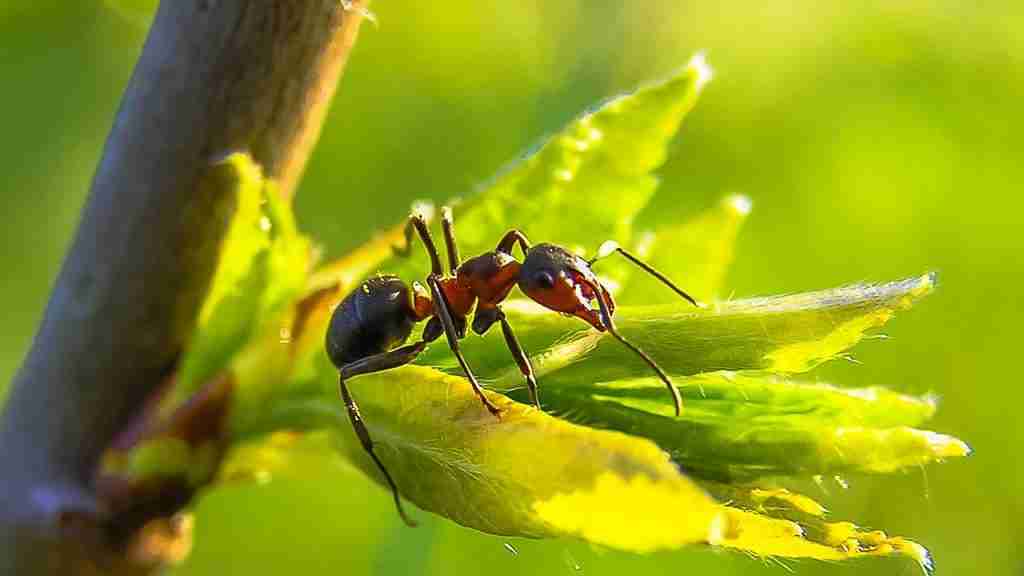
communicate and coordinate.
Ants are amazing creatures with an impressive ability to communicate with one another. They do it using special chemical signals known as pheromones. Pheromones act almost like a language, transferring information between colonies in exchange without any of them having to use any words.
Unlike other means of communication, the pheromones used by ants remain exactly how they were said and do not change over time, allowing completely accurate messages to be sent and received.
5. Do ants feel pain?
Ants do not feel pain as humans do. They can detect when they are harmed and respond accordingly, a capability known as nociception, which involves sensing damage without experiencing pain.
This distinction lies in their lack of pain receptors and emotional capacity, meaning ants react to physical harm purely from a survival instinct, not from a place of suffering or discomfort.
6. Ants have no heart or blood vessels but a dorsal aorta that pumps clear blood.
Ants possess a unique circulatory system centered around what is known as a dorsal vessel, functioning similarly to a heart but differing significantly from human hearts. This dorsal vessel runs along the top side of the ant’s body and is responsible for pumping hemolymph (a fluid akin to blood) throughout the body.
Unlike humans, ants don’t have a complex network of blood vessels; instead, their dorsal vessel directly moves hemolymph to various parts of their body, ensuring cells receive necessary nutrients and oxygen.
7. A species of ant is named after Harrison Ford.
The ant species Pheidole Harrisonfordi was named after Harrison Ford in honor of his significant contributions to tropical conservation. Ford’s dedication to environmental preservation and his active role in conservation efforts have garnered recognition within the scientific community, leading to this distinctive homage through the naming of a new ant species
8. Ants have been around for over 100 million years.
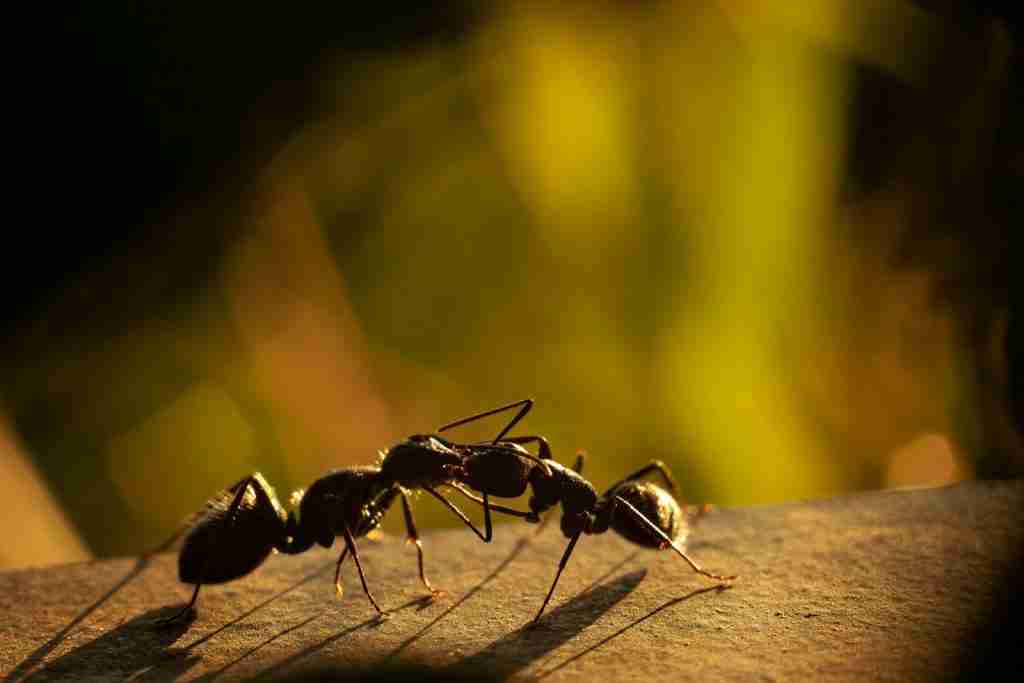
The ant is one of Earth’s true marvels in more ways than one. Did you know that a single species of ant has been around for an eye-popping 100 million years? That’s 10 times older than the oldest known dinosaur fossil.
It should come as no surprise then why the ant is renowned among nature’s most recognized contenders in long-term persistence and adaptation. Seriously, these industrious insects have withstood drastic changes in their environment, pulsing pandemics and diseases, cataclysmic meteoroids, heat-reverberating weather shifts; you name it.
9. The Average life span of an Ant is about 45-60 days.
Did you know that ants have a relatively short lifespan? The average life of an ant can range anywhere from 45 to 60 days. This might be because they are such hard workers, and their active lifestyle takes quite a toll on them.
Their determined effort and drive towards preserving their colonies, however, is incredibly admirable. Despite their brief existence, ants lay the groundwork for strong communities that will remain a legacy long after they are gone.
10. Ants are Omnivores – they Eat both Plants and Small Insects.
Ants are varied in their diet they boldly classify as omnivores. These small but mighty creatures subsist on both plants and insects. In this way, they are the modern definition of versatility.
With the ability to transition back and forth between meals, ants demonstrate a marvelous milieu in their eating habits. Furthermore, they can eat not only vegetables or fruits but also other bugs, such as caterpillars or aphids.
11. Ants were the world’s first farmers, practicing agriculture before humans.
Ants began practicing agriculture 60 million years ago, farming fungi long before humans started cultivating crops. This remarkable adaptation involved symbiotic relationships with bacteria that produced antibiotics to protect their fungal harvests, showcasing an early form of pest management.
The evolution of ant farming is linked to ancient climate changes, highlighting their innovative solutions to environmental challenges and marking them as the world’s first farmers
12. Once a queen ant mates, her wings fall off.
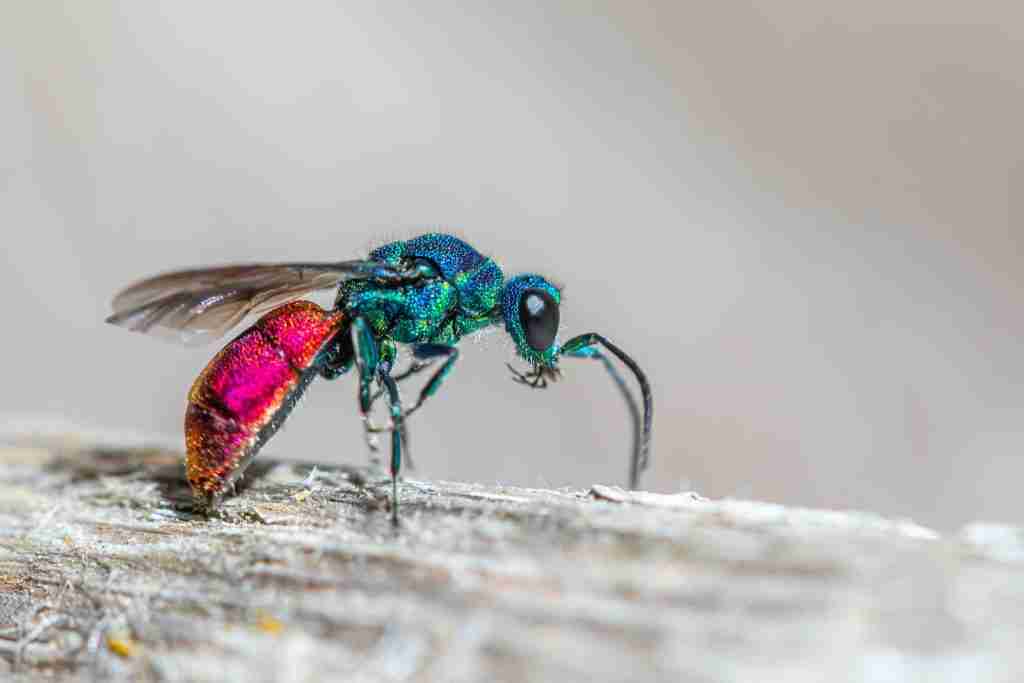
After mating, queen ants shed their wings, a process that serves multiple purposes, including using the wings for nutrition and ensuring the survival of their first-generation larvae.
This dramatic behavior occurs because, once the queen mates, she no longer needs the wings for flying and, thus, conserves energy for colony establishment and care for her offspring.
13. Fire ants sleep around 9 hours per day.
Fire ants, known for their industrious nature, manage to balance their busy foraging and nest-building activities with approximately 9 hours of sleep each day.
This sleep pattern, quite substantial for insects, is essential for their survival and efficiency, ensuring they remain alert and energetic for their daily tasks.
14. The bullet ant is said to have the most painful sting in the world.
The bullet ant’s sting is renowned for delivering the most intense pain a sting can cause, according to the Schmidt Pain Index. The pain from a bullet ant sting has been likened to being shot, hence the name, with the excruciating sensation lasting for up to 24 hours.
This severe reaction is due to the potent neurotoxic peptide, poneratoxin, found in the ant’s venom, which directly affects the nervous system.
15. Ants don’t have ears, and some of them don’t have eyes.
Ground to hear. While most ants have compound eyes for detecting movement, some species have evolved to be blind, particularly those that inhabit dark environments like underground tunnels or inside leaf litter.
This adaptation allows them to focus on other senses, such as touch and chemical signals, crucial for communication and survival within their colonies and the intricate tunnels they navigate.
16. Ants Have an Impressive Sense of Smell.
Ants have an amazing sense of smell, which rivals our own. They’re able to do things with their noses that many other creatures simply cannot.
Not only can ants detect odors as specifically as humans, but they also possess an interesting specialization: they are efficiently effective at distinguishing between different types and sources of odorants, a capacity that serves them in protection from predators, finding and grasping food sources, communicating with each other and more.
Researchers suggest this could be attributed to the insect’s complex network of olfactory cells—153 olfactory receptor genes compared to five human olfactory receptors.
17. Some ant species are asexual.
Some ant species reproduce asexually through a process called parthenogenesis, where females produce offspring without male fertilization. One notable species practicing this is the Mycocepurus smithii, found in Amazonian rainforests.
In these colonies, queens reproduce clones of themselves, ensuring a genetically uniform colony. This method of reproduction eliminates the need for males and mating, allowing these ants to efficiently spread and maintain their colonies in their specific environmental niches.
18. When Ants Attack, They usually do so in Large Numbers.
When it comes to ant aggression, ants attack together in large numbers. For example, army ants recruit hundreds for an assault by touching antennas, rapidly forming a formidable force.
This coordinated effort demonstrates their collective strength, making them more effective against adversaries. While individual ants are less threatening, their grouped power leads enemies to retreat in dismay.
19. The Biggest Ant Species is the Dinoponera, which can Grow up to Three to Four Centimeters Long.
The Dinoponera has tipped scales across the world to become the biggest living species of ant in existence. Rare sightings have been reported throughout South and Central America, with its size giving it a distinct appearance that no other tiny ant can rival.
Since its discovery over 100 years ago, nature enthusiasts from around the globe have felt compelled to get up close and personal with this unique creature.
20. The Smallest Ant Species are the Carebara Atoma species which Measures less than One Millimeter.
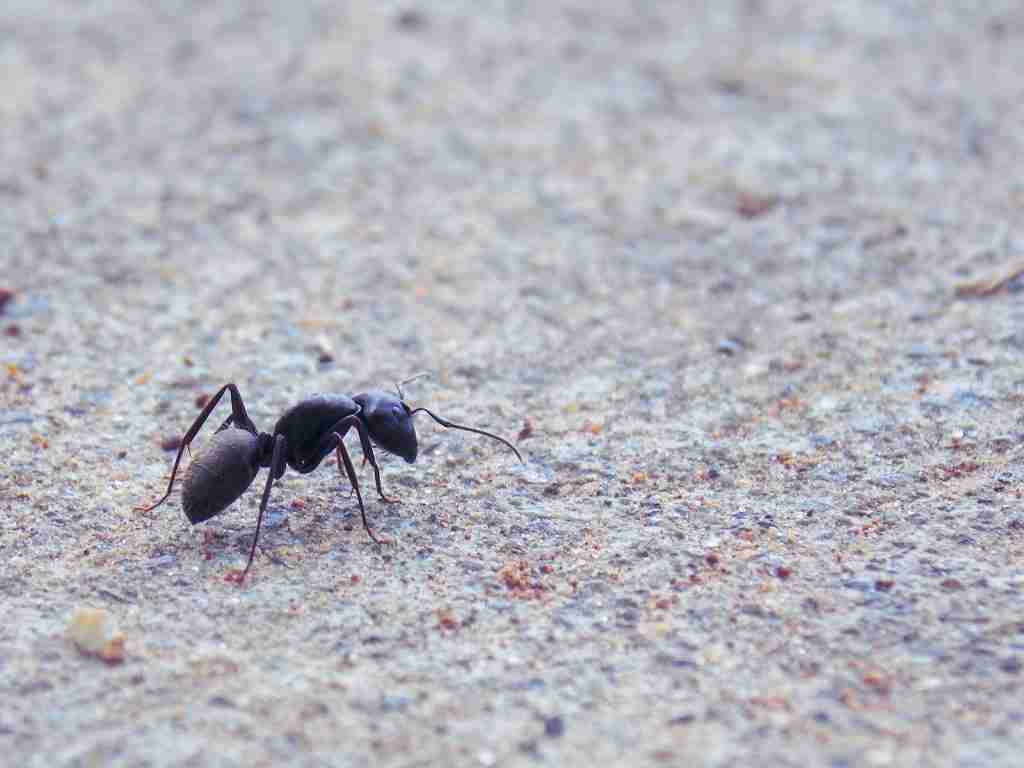
The Carebara Atoma species is one of the smallest ant species, measuring microscopic lengths of less than 1 millimeter. Its size could be compared to that of a pin head, yet it is still able to live hand-in-hand with its larger relatives.
Scientists studying these creatures can employ precision tools, like finely honed forceps and stereomicroscopes, inches away to examine these near-invisible wonders.
21. Some Ants will Lay their Eggs Inside other Living Creatures like Caterpillars.
Did you know that some ants will take their eggs to a whole new level and lay them inside living creatures? What’s even more fascinating is that these creatures include caterpillars.
This incredibly amazing fact proves just how inventive and resourceful ants can be. They use the unsuspecting caterpillar’s body nourishment and warmth without giving the host any direct harm, an adaption that many other species aren’t able to boast about. Simply put, it’s nothing shy of extraordinary.
22. Do ants drink water?
Ants do drink water, which is vital for their survival, especially during dry periods. They often collect water from dew, raindrops, or moist soil and transport it back to their nest to share with the colony.
The water is not just for hydration but also helps regulate the nest’s humidity, which is crucial for the eggs and larvae’s development. Some species are even known to store water in specialized chambers within their nests or use their own bodies to transfer it to the nest.
23. Certain Species of Ants Practice Slavery.
Certain ant species, such as the Polyergus and some Formica species, engage in what is termed as ‘slavery’ or more formally, ‘dulosis.’ This involves raiding the nests of other ant species, capturing their brood, and bringing them back to their colony.
The captured ants, once matured, perform tasks for their captors, such as foraging and caring for the young. This form of interspecies dominance showcases the complex social behaviors and survival strategies within the ant kingdom.
FAQS
There is no one-size-fits-all answer to this question, as the best course of action will vary depending on the species of ants and the level of infestation. However, in most cases, it is recommended to try to get rid of ants using non-lethal methods such as traps or repellents before resorting to lethal methods like poison gas or fumigation.
Ants are attracted to a variety of different things, both inside and outside of the home. Inside the home, ants can be attracted to spilled drinks, sugary foods, and other scraps left behind by humans. Ants may also seek out any cracks or crevices in walls or furniture that could provide them with access to food sources.
Ants are incredible creatures capable of many things that humans would not expect. When it comes to their vision, ants have eyes and can see, but in a limited fashion. Ants possess two sets of eyes – the compound eye and the ocelli – both of which provide them with vision but at different distances.
Ants are some of the most amazing creatures on Earth and have a great deal of knowledge stored in their tiny brains. While it may be hard to believe, ants can actually think and make decisions based on their environment. They possess sophisticated nervous systems that are very capable of processing information and making calculations to help them survive and thrive.
There are a few ways to get rid of ants permanently. One way is to use an exterminator, who will use lethal methods such as poison gas or fumigation to kill the ants. Another way is to use natural methods, such as traps or repellents. Finally, another way is to simply remove their food and water sources, which will eventually cause them to die off.
There are more than 12,000 known species of ants in the world, and new species are still being discovered.
The lifespan of an ant varies depending on the species, with some living for only a few weeks and others living for several years. Most worker ants typically live for several months, while queen ants can live for several years or even decades.

